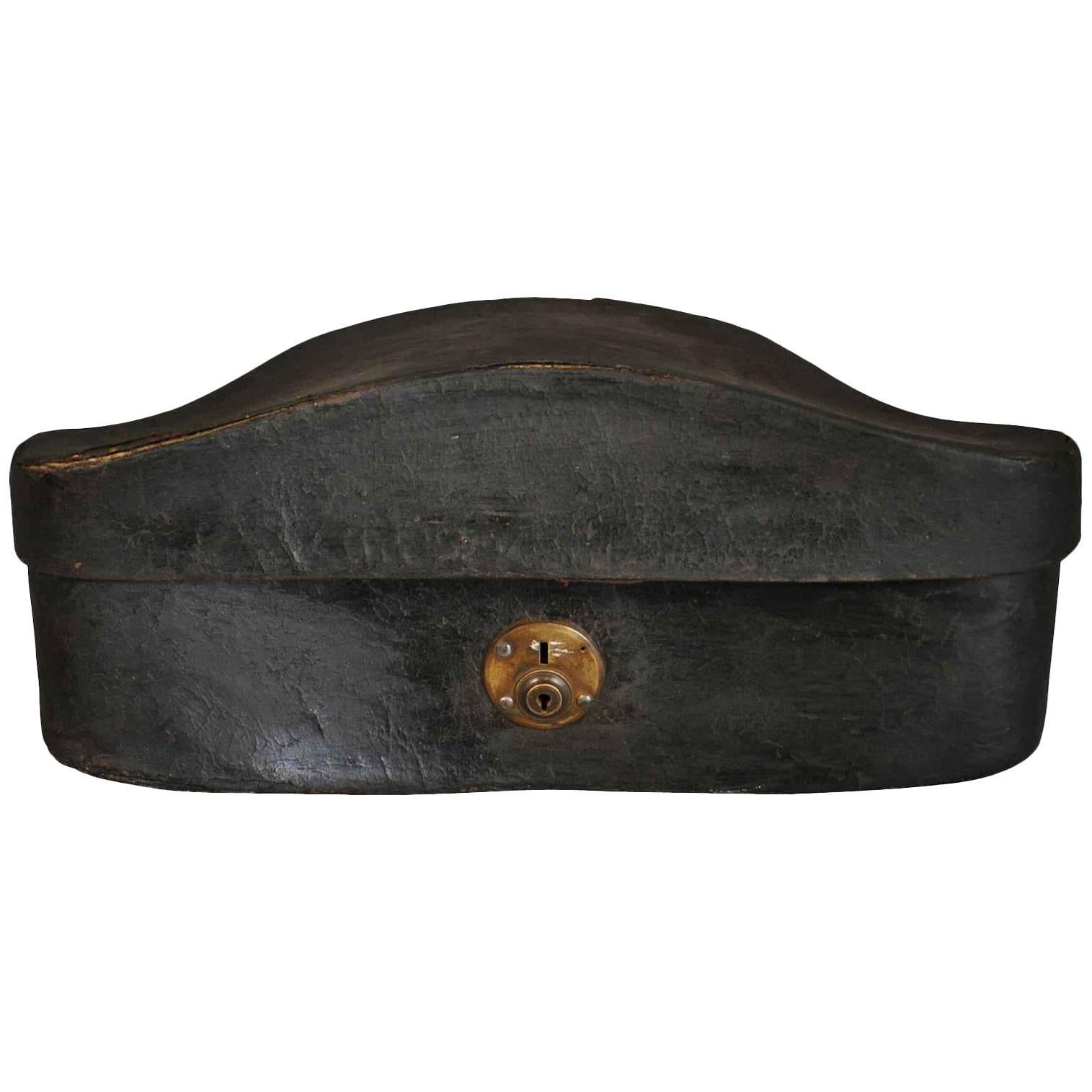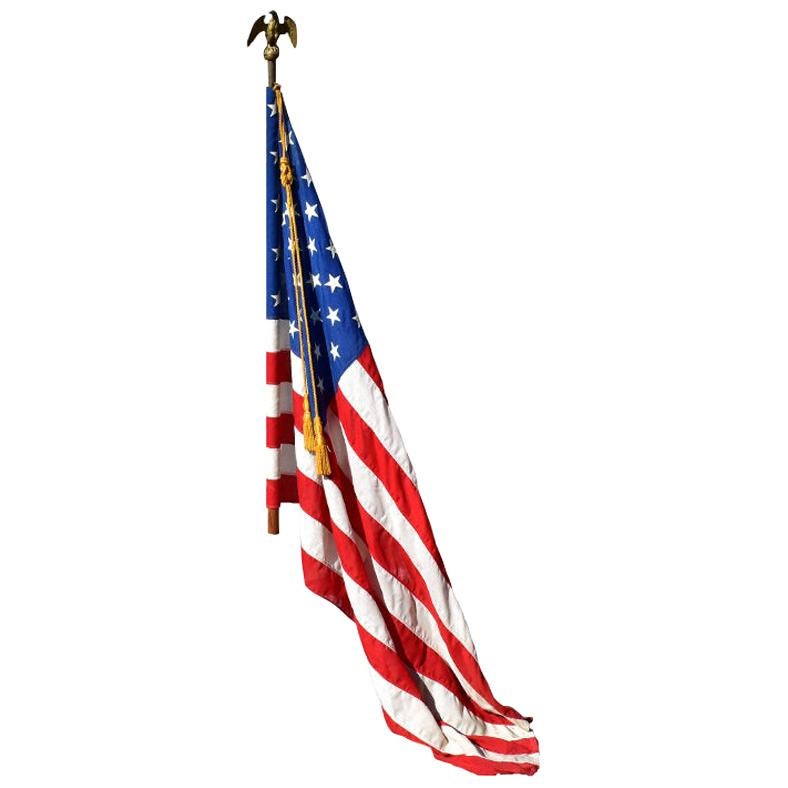Items Similar to Original Pottery Sculpture Head Planter, General Charles De Gaulle
Want more images or videos?
Request additional images or videos from the seller
1 of 14
Original Pottery Sculpture Head Planter, General Charles De Gaulle
About the Item
Original Pottery sculpture head planter, general Charles De Gaulle Political Memorabilia.
This original, one-of-a-kind pottery sculpture head is also a vessel/planter. The unique folk-art piece pays homage to the famous General Charles De Gaulle and his remarkable prominent profile. This political memorabilia pottery head was created circa 1950s. The sculpture is signed by the artist (illegible) on the back of the neck and photographed.
Condition: Very good. No breaks of any kind.
Measurements: H 10” x W 8” x D 7.5”
Weight: 6 lbs. 15oz.
- Dimensions:Height: 10 in (25.4 cm)Width: 8 in (20.32 cm)Depth: 7.5 in (19.05 cm)
- Style:Folk Art (In the Style Of)
- Materials and Techniques:Clay,Fired
- Place of Origin:
- Period:
- Date of Manufacture:circa 1950s
- Condition:Wear consistent with age and use.
- Seller Location:Vero Beach, FL
- Reference Number:1stDibs: LU3915330878162
About the Seller
4.8
Platinum Seller
These expertly vetted sellers are 1stDibs' most experienced sellers and are rated highest by our customers.
Established in 2018
1stDibs seller since 2018
187 sales on 1stDibs
Typical response time: <1 hour
- ShippingRetrieving quote...Ships From: Vero Beach, FL
- Return PolicyA return for this item may be initiated within 14 days of delivery.
More From This SellerView All
- Large German Hutschenreuther Hand Painted Porcelain Plaque Head of ChristBy HutschenreutherLocated in Vero Beach, FLThis is a superb portrait of Christ. It is hand painted in extraordinary quality with polychrome enamel on an oval porcelain plaque after the original painting -Head of Christ...Category
Early 20th Century German Renaissance Revival Paintings
MaterialsVelvet, Porcelain
- Orientalist Nuremberg Late 19th Century, Arab Lead SculptureLocated in Vero Beach, FLOrientalist Nuremberg Late 19th Century, Arab Lead Sculpture Beautiful polychrome Nuremberg lead sculpture. Arab warrior seated on a camel, clad in robes and holding a rifle in his ...Category
Antique Late 19th Century Other Models and Miniatures
MaterialsLead
- 12th Century Rare Romanesque Wood Sculpture of the Virgin MaryLocated in Vero Beach, FL12th century extremely rare romanesque wood sculpture of the Virgin Mary. Magnificent wood hand carved sculpture of the Virgin Mary holding a book to her chest. It is an extremely rare survivor of the 12th century. The style is European, possibly French or English. This statue is a testimony to beautiful religious art from about 1150. A truly rare Romanesque sculpture...Category
Antique 15th Century and Earlier English Medieval Figurative Sculptures
MaterialsStone
- 13th Century Period Wood Carved Polychrome Sculpture of Corpus ChristiLocated in Vero Beach, FL13th Century Period Wood Carved Polychrome Sculpture of Corpus Christi Rare and beautiful sculpture of Corpus Christi. The artwork, probably German, is carved from hardwood. This f...Category
Antique 15th Century and Earlier Unknown Medieval Religious Items
MaterialsHardwood, Paint
- Original Drawing, Circle of Giovanni Battista Tiepolo 1696-1770 Venice, ItalyBy Giovanni Battista TiepoloLocated in Vero Beach, FLOriginal Drawing, Circle of Giovanni Battista Tiepolo 1696-1770 Venice, Italy Although we offer this old master drawing as circle of Tiepolo, we are convinced, based on the composi...Category
Antique 18th Century Italian Rococo Drawings
MaterialsPaper
- Native American Indian Doll with Traditional Lakota Sioux Cherokee Wedding DressLocated in Vero Beach, FLNative American Indian doll with traditional Lakota Sioux Cherokee wedding dress with bead-work, one of a kind This is an authentic Native American, Am...Category
Vintage 1980s North American Native American Native American Objects
MaterialsLeather, Clay
You May Also Like
- Sensational Early 19th Century Chapeau De Gendarme Hat BoxLocated in Atlanta, GAA sensational early 19th century French Chapeau De Gendarme - officer's hat box in leather. Such a nostalgic shape!! A great accent piece for any b...Category
Antique Early 19th Century French Arms, Armor and Weapons
MaterialsLeather
- AL Malaikah Vintage Iconic Masonic Shriner Burgundy Wool Fez Hat in Original BoxLocated in North Hollywood, CAAL Malaikah vintage Masonic Shriner iconic burgundy wool Fez hat with original box. Al Malaikah, legion of Honor vintage fez hat from the Los Angeles ...Category
Vintage 1970s American Moorish Political and Patriotic Memorabilia
MaterialsWool
- 19th c Wooden Ceremonial Fraternal Masonic Crook and Metal Spear on Metal BasesLocated in Savannah, GALarge size gold gilt wooden ceremonial fraternal Masonic Crook perched on a long painted wooden pole. Supported by a decorative three-footed metal base, the gilt wood crook itself me...Category
Antique 1890s American Folk Art Historical Memorabilia
MaterialsMetal
- Dutch WWII Caricatures of Hitler, Göring, Stalin, Rooseveld, and ChurchillBy GuustLocated in Haarlem, NLA very remarkable collection of Folk Art caricatures made of Dutch ration 'food stamps.' First caricature portrays a fat Hermann Go¨ring holding a cerem...Category
Mid-20th Century Dutch Historical Memorabilia
MaterialsPaper
- Antique Federal Eagle American 50 Star Flag with Brass Eagle Pole, 19th CenturyLocated in Oklahoma City, OKMonumental 50 star American Flag with antique Federal Eagle brass and wood pole. A patriotic piece suitable for any home. This set includes both ...Category
Antique 19th Century American Federal Political and Patriotic Memorabilia
MaterialsBrass, Bronze
- 36 Star American Flag, Civil War Era, Nevada StatehoodLocated in York County, PA36 Stars In The "Great Star" Or "Great Luminary" Pattern On A Civil War Era Flag With A Dusty Blue Canton And A Section Of One Stripe Souvenired, 1864-67, Nevada Statehood 36 star American national flag of the Civil War era, entirely hand-sewn and with some rare and beautiful features. The stars are arranged in a rendition of what is known as the Great Star or Great Luminary configuration, a large star made out of smaller stars. With no official star pattern before 1912, their design was left up to the artistic liberties of the flag-maker. Strikingly visual, the Great Star is both scarce and coveted by collectors. The 36th state, Nevada, entered the Union during the Civil War on October 31st, 1864. The last Confederate general surrendered on May 26th, 1865. The 36 star flag became official on July 4th of that year, but makers of printed flags would have begun adding a 36th star to their flags in 1864, even before the addition of the new state occurred. Lincoln pushed Nevada through just 8 days before the November election. Nevada’s wealth in silver was attractive to a nation struggling with the debts of war and increased support for the Republican ticket. The 36 star flag was replaced by the 37 star flag in 1867, with the addition of Nebraska. Adding to the flag's appeal is its small scale across those with of piece-and-sewn construction. During the 19th century, sewn flags (as opposed to those that were printed on cloth) were typically eight feet long and larger. This is because they were important in their function as signals, meaning that they needed to be seen and recognized from great distance. A flag that was six feet in length was considered small and production of flags smaller than this was extremely limited. Even infantry battle flags were approximately six by six and-one-half feet, about the size of an average quilt of the same period. As time passed, circumstances changed and sewn flags began to find more of a decorative purpose. Smaller flags are more scarce and far easier to frame and display. The Great Star configuration appears to have come about shortly after the War of 1812, when Congressman Peter Wendover of New York requested that Captain Samuel Reid, a War of 1812 naval hero, create a new design that would become the third official format of the Stars & Stripes. A recipient of the Congressional Medal of Honor, Reid became harbor master of New York following the war. During his lifetime, he created many innovations in signal use, including a system that could actually send messages from New York to New Orleans by sea in just two hours. Use as a Naval signal had been the primary reason for the initial creation of an American national flag in 1777, but since there was no official star design, the appearance of our flag varied greatly. Reid’s primary concern centered on both consistency and ease of recognition. His hope was as more and more states joined the Union and more and more stars were added to the flag, that it would remain easily identified on the open seas. In 1818, Reid suggested to Congress that the number of stripes permanently return to 13 (reduced from 15) and that the stars be grouped into the shape of one large star. Reid’s proposal would have kept the star constellation in roughly the same format, in a pattern that could be quickly identified through a spyglass as the number of states grew. His concept for the stripes was ultimately accepted, but his advice on the star pattern was rejected by President James Monroe, due to the increased cost of arranging the stars in what would become known as the “Great Star”, “Great Flower”, or “Great Luminary” pattern. Monroe probably didn’t wish to impose this cost on either the government or civilians, so he suggested a simple pattern of justified rows. Never-the-less, the Great Star was produced by anyone willing to make it and its rarity today, along with its beauty, has driven the desirability of American flags with this configuration. The canton and stripes of the flag are made of fine merino wool. Note how the canton has faded to a dusty seafoam blue, which is endearingly attractive. The stars of the flag are hand-sewn and single-appliquéd. This means that they were applied to one side of the canton, then the blue fabric was cut from behind each star, folded over, and under-hemmed, so that one star could be viewed on both sides of the flag. I always find single-appliquéd stars more interesting, not only because they are evidence of a more difficult level of seam-work and stitching, but also because they are more visually intriguing. The two visible rows of hand-stitching emphasize their hand-sewn construction, which is one reason why flags with single-appliquéd stars often appeal to connoisseurs of early American textiles...Category
Antique 1860s American Political and Patriotic Memorabilia
MaterialsWool
Recently Viewed
View AllMore Ways To Browse
Used Memorabilia
Charles Head
Pottery Head
Signed Memorabilia
French Clay Pottery
Used Political Memorabilia
Memorabilia Patriotic Political
Vintage Clay Planter
Pottery Clay Head
Head Planter Vintage
Charles De Gaulle
Retro Head Planters
Vintage Political Memorabilia
Fire Memorabilia
Vintage Patriotic Memorabilia
Charles Brown Pottery
Flags Antique
Antique Flag Flags




